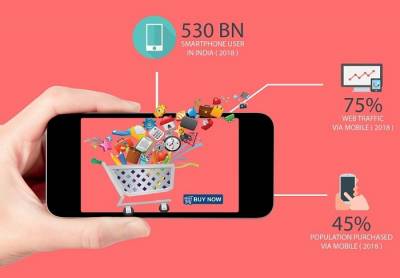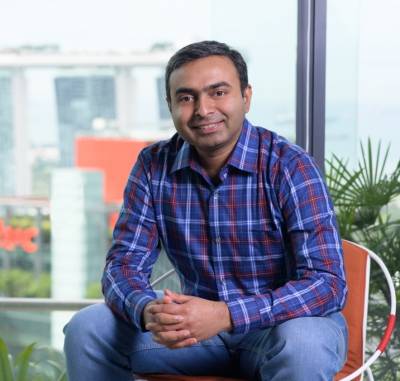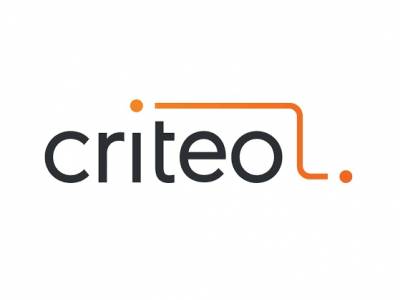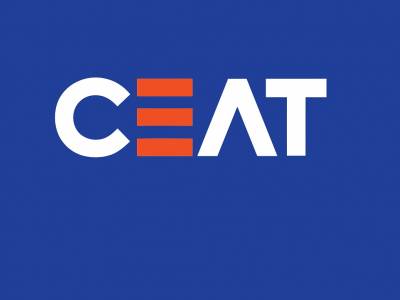Indepth: How m-comm has become a crucial touchpoint for online shoppers - Part 2
The slew of festive season sales on e-commerce platforms has given a huge impetus to online shopping in India, so much so that the effects are now being seen on offline retail sales. According to media reports, a statement issued by the Confederation of All India Traders (CAIT) soon after Diwali acknowledged the fact that there was a fall in the number of consumers visiting retail outlets for their festival shopping this year. A study by Oath revealed that sales increased 29 per cent year-over-year in September 2018, setting a record high for India’s festive shopping season online.
Thanks to the growing smartphone proliferation and adoption in India, more and more people are shopping online through their mobile phones. According to Criteo’s findings, retail sales from mobile web in the weeks leading to Diwali last year saw an increase of 128 per cent. Offering ease of convenience, mobile phones have become the prime point of brand interaction with consumers. Apps represent the most personalised channel to reach India’s consumers.
In this two-part in-depth report, Adgully looks at the growth of e-commerce in the mobile space. Part 1 of the report dwelled on the factors that are fuelling this growth, the app economy, as well as innovations & initiatives. Part 2 of the report covers aspects like how brands can successfully leverage m-commerce, how e-commerce has charted its growth story, and the trends to watch out for.
The brand drive
Speaking on how brands and marketers can get a maximum bang for bucks in their e-commerce business, Ritika Taneja, Head - Category Management, ShopClues, said, “Brands and sellers can test and try products before investing at scale in inventory with streamlined sales and distribution. Sellers can focus on supply and merchandise ensuring consistency and stability in business. With Indians going online as data prices drop, sellers can tap into online channels without incremental cost and reach out to markets never tapped before.”
Shekhar Mhaskar, EVP and India Lead for Isobar Commerce, observed, “Here we are talking about existing marketplaces like an Amazon or a Flipkart. They already have a huge number of customers across ages, demographics, gender, etc. These marketplaces have run intelligence on these audiences; tracked their shopping behaviour, analysed trends, etc., and put together the data for brands to take advantage of. Brands need to define their audience and marry them with the shoppers on these marketplaces so that they can be targeted with the right communication. Brands can create brand pages to offer a bouquet of products and attractive offers. The UI of these pages must be compelling to rivet the attention of the shoppers.”
Not only is the presence important, but a strategy to drive customers to these pages is equally important. This can be done by buying relevant keywords on these market places, as also run SEM campaigns on Google. In addition, the smart use of programmatic media can help drive the right audience to these e-market places to witness overall effectiveness.
Another opportunity for brands is to be part of the regular shopping festivals that these marketplaces host. They strategically reach out to shoppers and attract them with offers and discounts. No time better than this for brands to reach out to their audiences.
Siddarth Dabhade, General Manager, Criteo, firmly believed that an e-marketplace was the right fit for advertisers. He noted, “Consumers have greater acceptance for ads and are more likely to click if the ad is displayed in a retail and shopping app. It is, therefore, crucial for brands to be part of best recommended products. According to Criteo Mobile app survey 2017, over 42 per cent surveyed consumers confirmed that they have clicked on display ads and then went on to purchase that product. Hence, it’s a great opportunity for brands to increase their visibility through this method.”
On the technology front, brands can leverage the latest technologies available to target consumers in the best possible manner. With their core competence, brands should be open to utilising the right technology to target the right audience.
Charting a growth story
Dabhade remarked, “We have seen tremendous growth in the Indian e-commerce sector in the last few years, and there would be exponential growth by the year 2020. Mobile played a pivotal role in this growth. According to our recent Q2 Global Commerce Review findings, mobile continues to rise globally. APAC has been a clear leader in mobile transactions (51 per cent). In India, apart from popular retail categories, mobile emerged as a big platform for high involvement categories as well, which includes furniture, jewelry and travel.”
According to Mhaskar, “Retail giant Walmart expects that e-commerce will grow at four times the pace of overall retail in India over the next five years. It said that total retail will grow at a CAGR of around 9 per cent between FY18 and FY23, while Indian e-commerce market will grow by around 36 per cent. This, in turn, will increase Indian e-commerce’s penetration from 2.1 per cent in 2017-18 to around 6.2 per cent in 2022-23. This gives a sense of the growth. Mobile has been the major contributor at about 75 percent this year, and slated to go over 80 per cent by 2020.”
Taneja noted, “India is one of the fastest-growing e-commerce markets worldwide, with millions of new internet users taking advantage of cheap mobile connections to send mobile messages, watch online videos, use mobile services, and of course, to shop. According to recent market research, mobile phone internet user penetration in India is projected to reach 37.36 per cent of the population in 2021, representing a huge potential in terms of digital and mobile buyer audience. Total internet audiences in India are estimated to surpass 635 million online users in 2021.”
Tracking online shoppers’ buying behaviour
ShopClues’ Taneja pointed out that the purchase pattern has been mostly in categories like Home & Kitchen and Fashion, which have contributed to over 70 per cent during the sale period this year. She further said that Mobile and Laptop accessories garnered a share of around 20 per cent during this festive season. “Otherwise, it is the re-furbishing category which is a huge hit on ShopClues,” she added.
Mhaskar of Isobar believed that all product categories have benefitted from the wave of e-commerce. “What started earlier with books on Flipkart, or clothing on Myntra, the product categories have increased manifold over the years. Almost all product categories have taken advantage of the boom and grown tremendously. Of the lot, the categories that have rapidly grown are white goods, FMCG, electronics, mobiles, clothing, groceries, and beauty,” he pointed out.
“Major players in the e-commerce sector have been attracting consumers during festive season and holidays with mega sales. We recently released seasonal data for Diwali festive season sale, which shows that most popular product categories include mobile phones, decorations, kitchen and dining and Jewelry and watches, closely followed by clothing, cosmetics, shoes, accessories and personal care,” Criteo’s Dabhade informed, adding, “Even on non-topical days, consumer electronics, fashion products and home furnishing and furniture are also very popular. We could also expect a tremendous growth in the financial products categories, with more players entering the space.”
Trends to watch out for
Taneja is optimistic about enhanced customer experience on digital platforms through means of using regional languages, chatbots to ensure always on support, and a personalised journey of consumers across touchpoints.
Meanwhile, for Mhaskar, e-commerce apps might not be the next big trend. He opined, “While a lot is covered in the previous sections that talks about the m-commerce trends, something that comes to the fore is that e-commerce apps might die soon. It is all going to transition to PWA running off the phone browsers. The technology doesn’t need users to download the app and eat up space, but allows them to open the browser and have the exact same experience of an app. No updates needed. Any new feature added to the store is readily available through the PWA. Many players will start offering one-click payments to curb cart abandonments. Also, providing an omni-channel experience is being on the trial where online coupons can be redeemed in the stores.”
Dabhade provided a more holistic view of the e-commerce ecosystem, saying, “Mobile internet has been the main driver of internet growth in India. This has led to mobile becoming a necessary device for Indian consumers when it comes to shopping. Major apps installed on consumer’s smartphones include, Social media, e-commerce, entertainment, news apps, etc. It is also becoming a trend to order food, groceries, services, etc., via mobile apps as more and more product categories are now coming on mobile platform.”























Share
Facebook
YouTube
Tweet
Twitter
LinkedIn